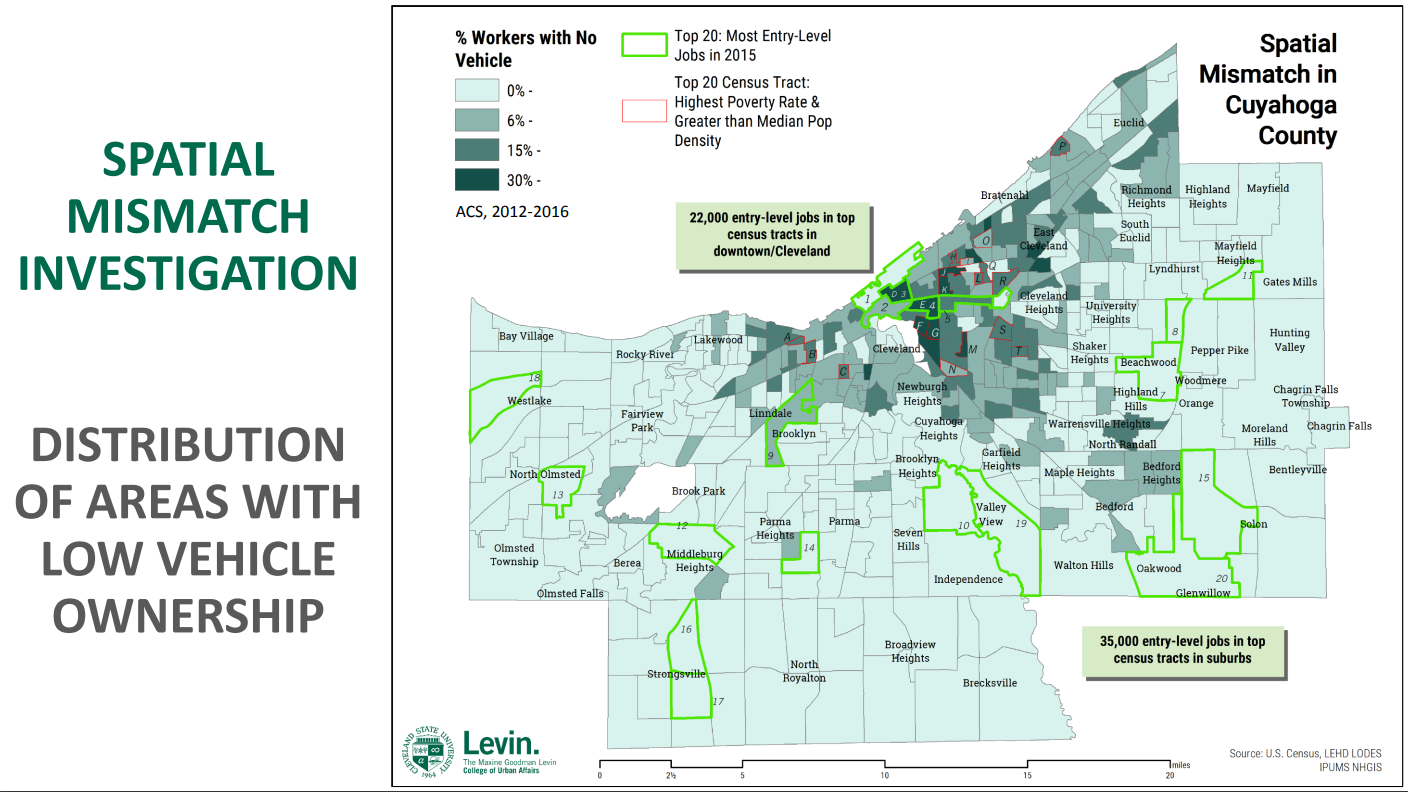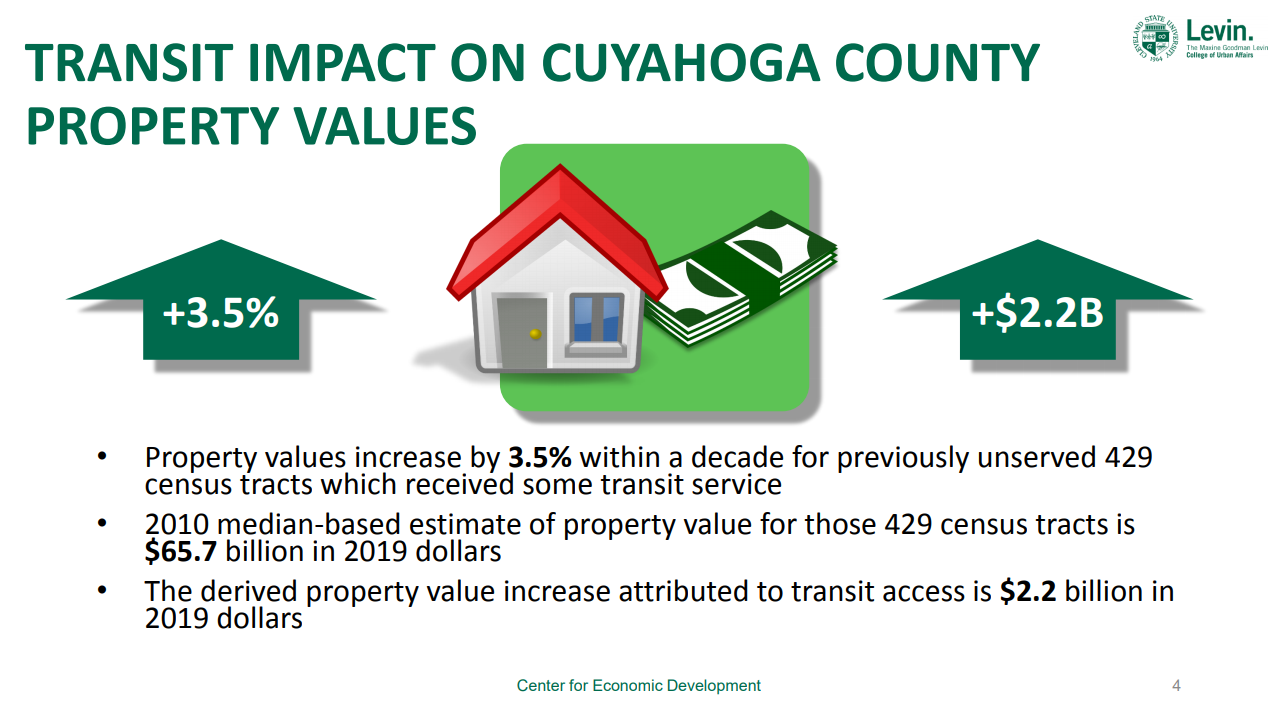
Share On Social!
Transit is good for Cleveland’s economy, according to a new study.
Researchers at Cleveland State University’s Center for Economic Development explored the economic impact of the Greater Cleveland Regional Transit Authority (GCRTA) over the past decade.
They found it’s good for commuters, students, employers, school districts, and healthcare institutions across the region.
“[The Transit Authority] is fantastic investment for taxpayers,” Obed Pasha, an assistant professor at Cleveland State and one of the study’s authors, told Streetsblog USA. “Not only does it help lift people out of poverty, it helps revitalize neighborhoods.”
Transportation Woes in Cleveland
Housing and transportation are important factors to get out of poverty and stay healthy.
However, transportation is a big obstacle for low-income workers in Cuyahoga County, where entry-level jobs are located far away from urban neighborhoods.
Like many cities across the country, Cleveland suffers from spatial mismatch, which impacts census tracts — the geographic regions defined for the census.
These mismatches look like most entry-level jobs being located in the suburbs, far away from the census tracts with the highest poverty rates and lowest vehicle ownership rates.
Spatial mismatch increases transportation costs and reduces access opportunity — particularly for families without a vehicle.
 Moreover, many families struggling with long commutes and high transportation costs are also burdened by high housing costs.
Moreover, many families struggling with long commutes and high transportation costs are also burdened by high housing costs.
In many census tracts in Cuyahoga County, more than 40% of families are paying more than 30% of their annual income on housing. County-wide, 15.7% are paying more than 50%.
Access to frequent and reliable transit help level the playing field and increase access to opportunity.
Legalizing duplexes, triplexes, and fourplexes in areas exclusively zoned for single-family homes and increasing walkability in suburban areas can also increase access to opportunity and reduce disparities in health and wealth.
Transit Wins in Cleveland
The research team at Cleveland State found that between commuting, rides to medical appointments, trips to school and consumer shopping trips, GCRTA returns about $321 million annually in economic activity.
The Authority creates nearly 3,000 jobs for the region, through direct employment within the agency and boost in employment at local businesses that benefit from service.
Cleveland commuters spend 53% less in transportation costs by using transit versus driving, saving $51.9 million annually.
Workers who depend on GCRTA bring home an estimated $485.8 million of annual earnings.
 Moreover, nearly 17,000 students depend on GCRTA to get to school, saving school districts $28.7 million annually.
Moreover, nearly 17,000 students depend on GCRTA to get to school, saving school districts $28.7 million annually.
Healthcare institutions in the region may lose $103.4 million annually when transit-dependent patients miss or cancel appointments. GCRTA services can help patents get the care they need and reduce costs associated with canceled appointments and readmissions.
In the past decade, increase transit service to previously unserved neighborhoods is associated with a drop in poverty rates.
Neighborhoods that gained access to transit over the past decade saw property values rise 3.5%, totaling $2.2 billion. GCRTA service in those neighborhoods is associated with a 3.1% increase in employment and 12.9% decrease in neighborhood poverty in the long-term.
Share this with health, equity, and transit advocates in your community and urge leaders to conduct a spatial mismatch investigation to guide investment in equitable access to frequent transit services.
By The Numbers
27
percent
of Latinos rely on public transit (compared to 14% of whites).



